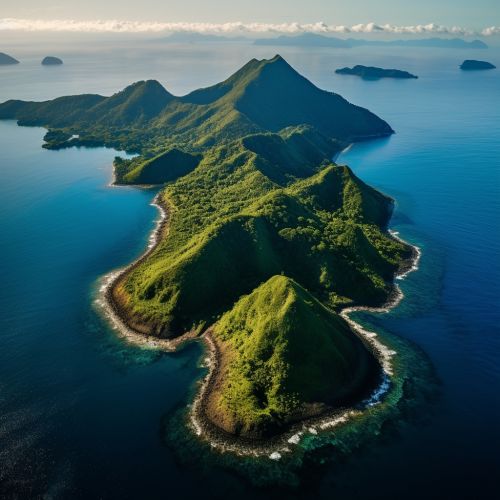Volcanic Island Arc
Introduction
A Volcanic Island Arc is a type of archipelago, often composed of a chain of volcanoes, with arc-shaped alignment, situated parallel and close to a boundary between two converging tectonic plates.
Formation
Volcanic island arcs form over millions of years from the ongoing subduction of one tectonic plate beneath another. The subducting plate, being denser, moves into the mantle beneath the other plate, a process that can produce significant volcanic activity.


Structure and Composition
The structure of a volcanic island arc is complex and involves a variety of geological features. The primary feature is the volcanic arc, which is a chain of volcanoes that form the 'backbone' of the island arc. These volcanoes are primarily composed of andesite, a type of volcanic rock that is intermediate in composition between mafic and felsic rocks.
Examples
Some of the most well-known examples of volcanic island arcs include the Aleutian Islands in the Northern Pacific, the Philippine Archipelago in the Western Pacific, and the Lesser Antilles in the Caribbean Sea.
Ecological Significance
Volcanic island arcs play a significant role in the ecology of the surrounding ocean and land areas. They provide habitats for a diverse range of species, many of which are endemic to these islands.
Economic Importance
Volcanic island arcs are also of economic importance. They are often rich in natural resources, including minerals and geothermal energy.
Hazards
Despite their beauty and ecological significance, volcanic island arcs can also pose significant hazards. These include volcanic eruptions, earthquakes, and tsunamis.
